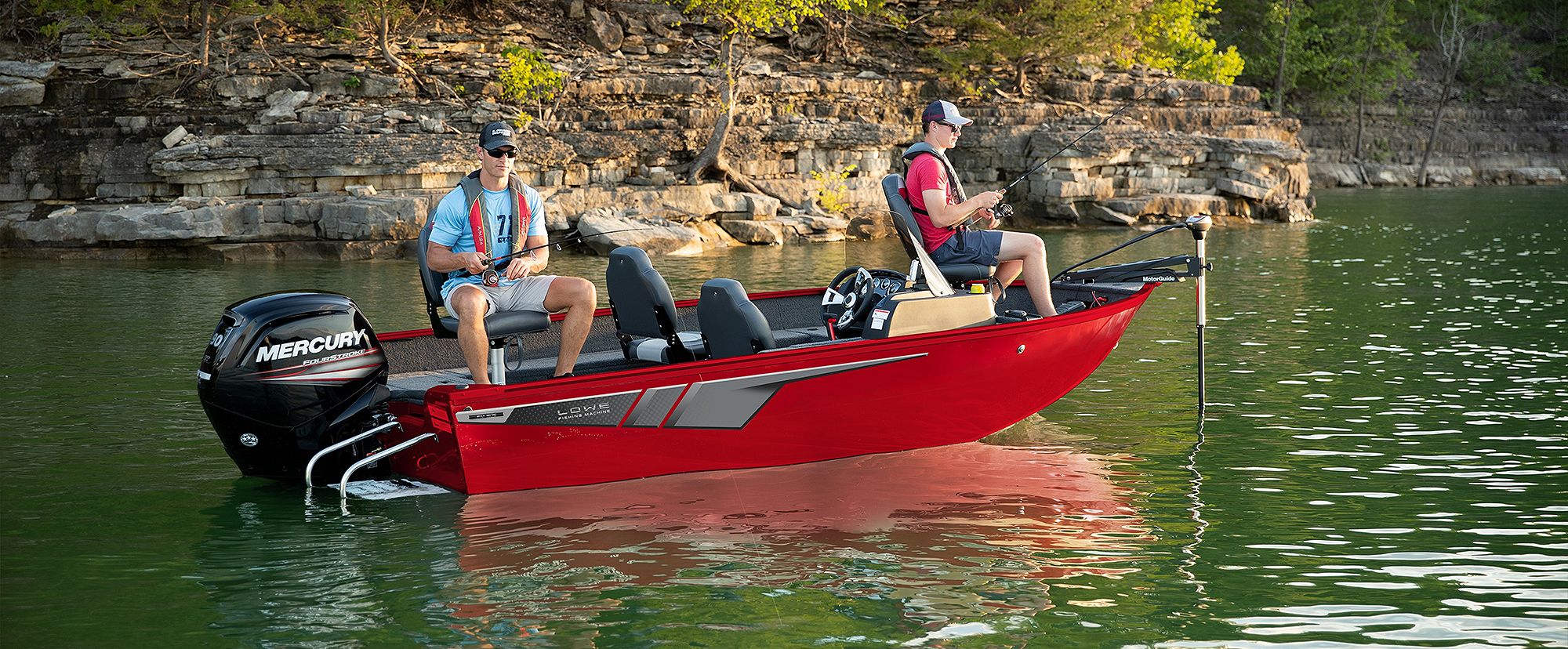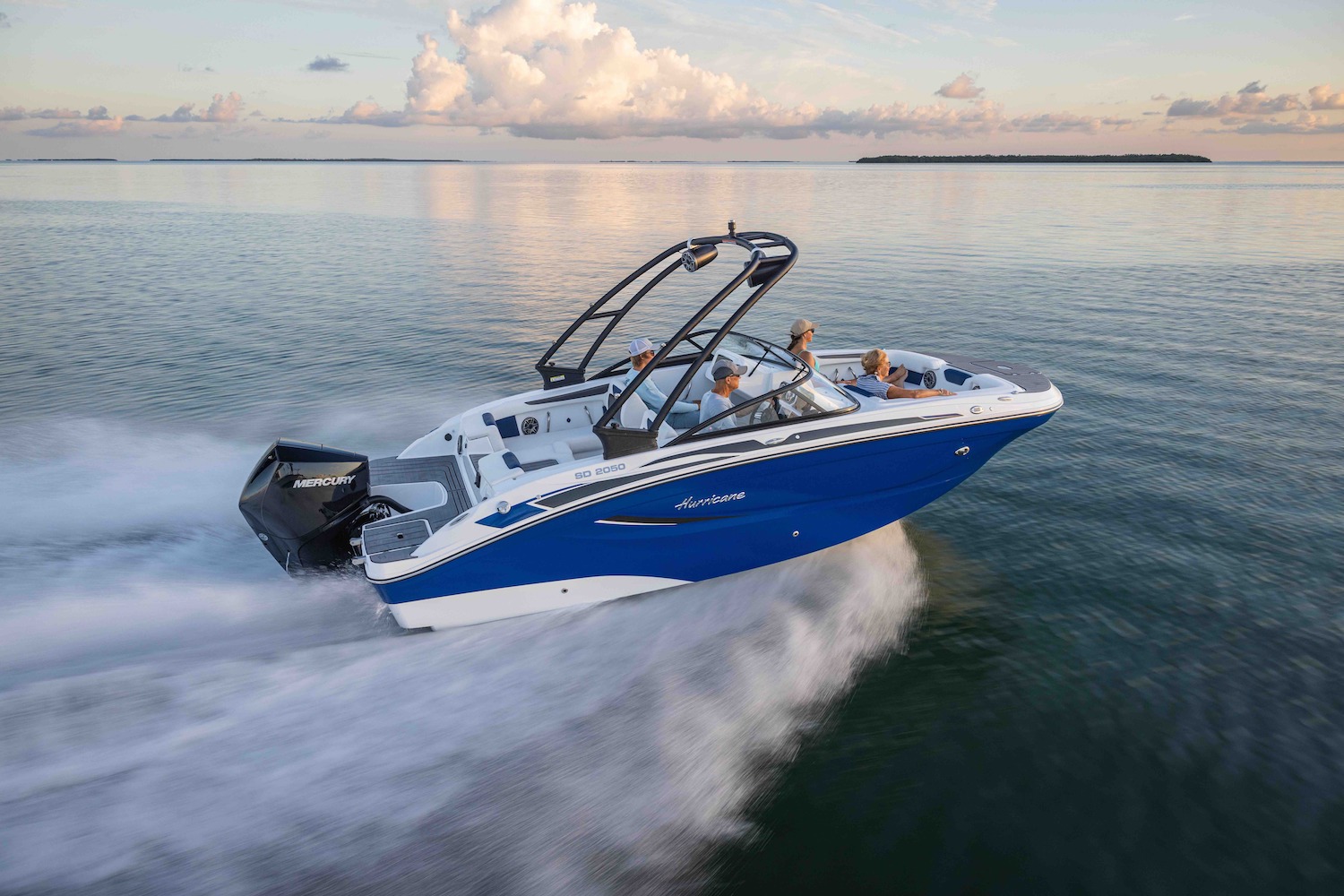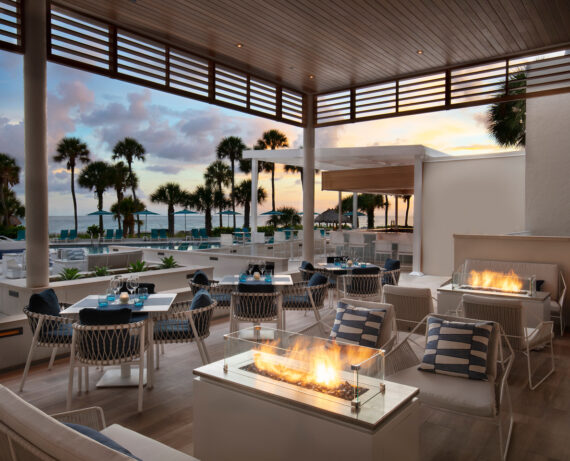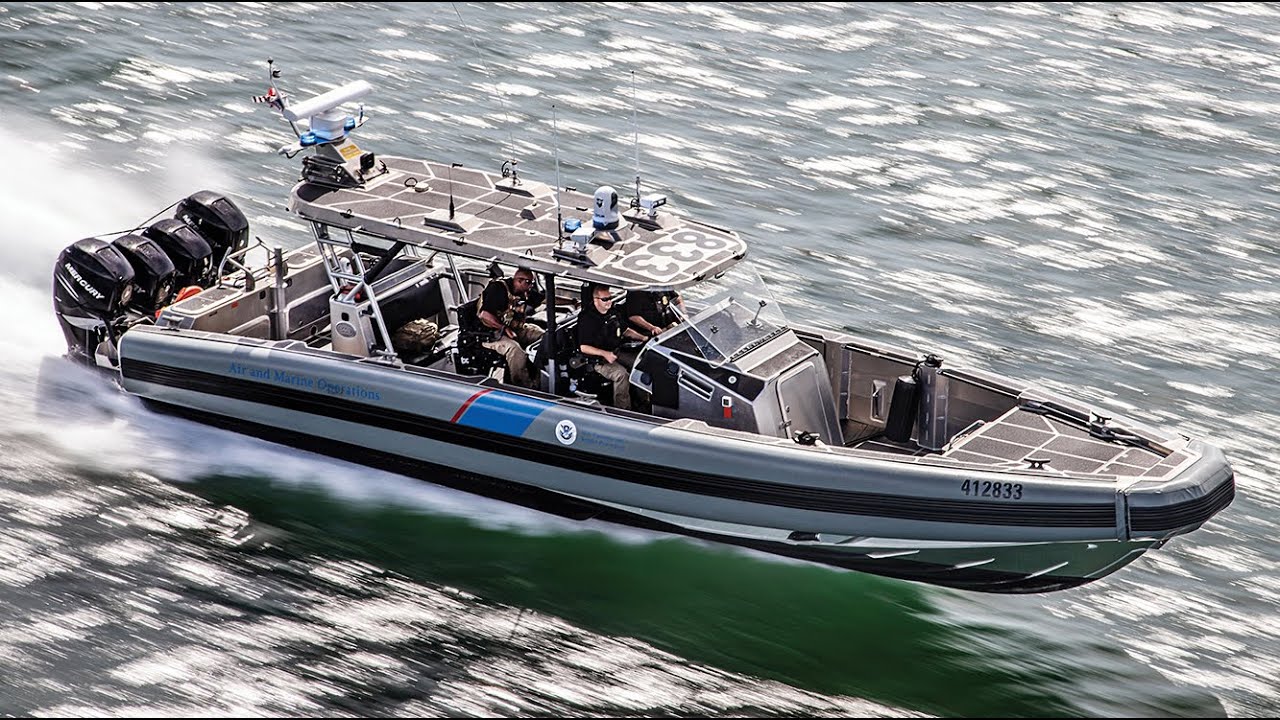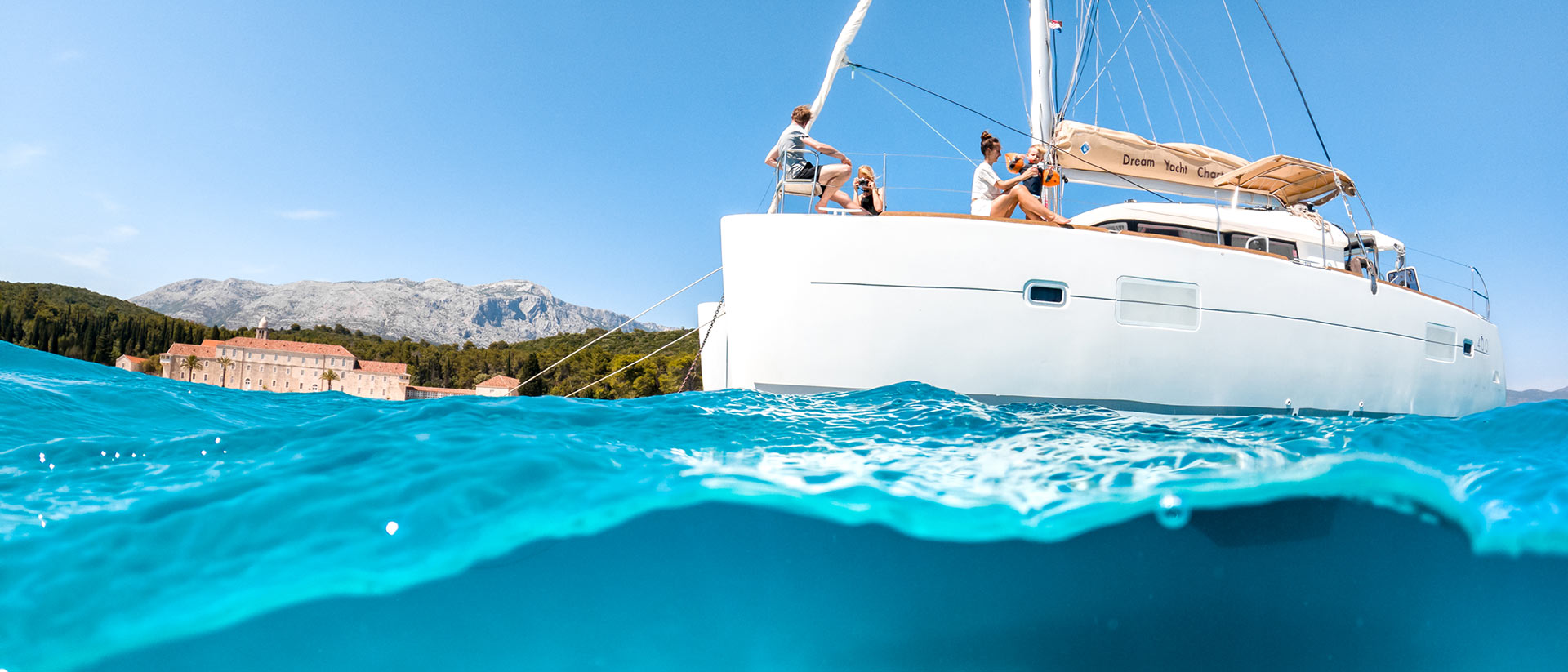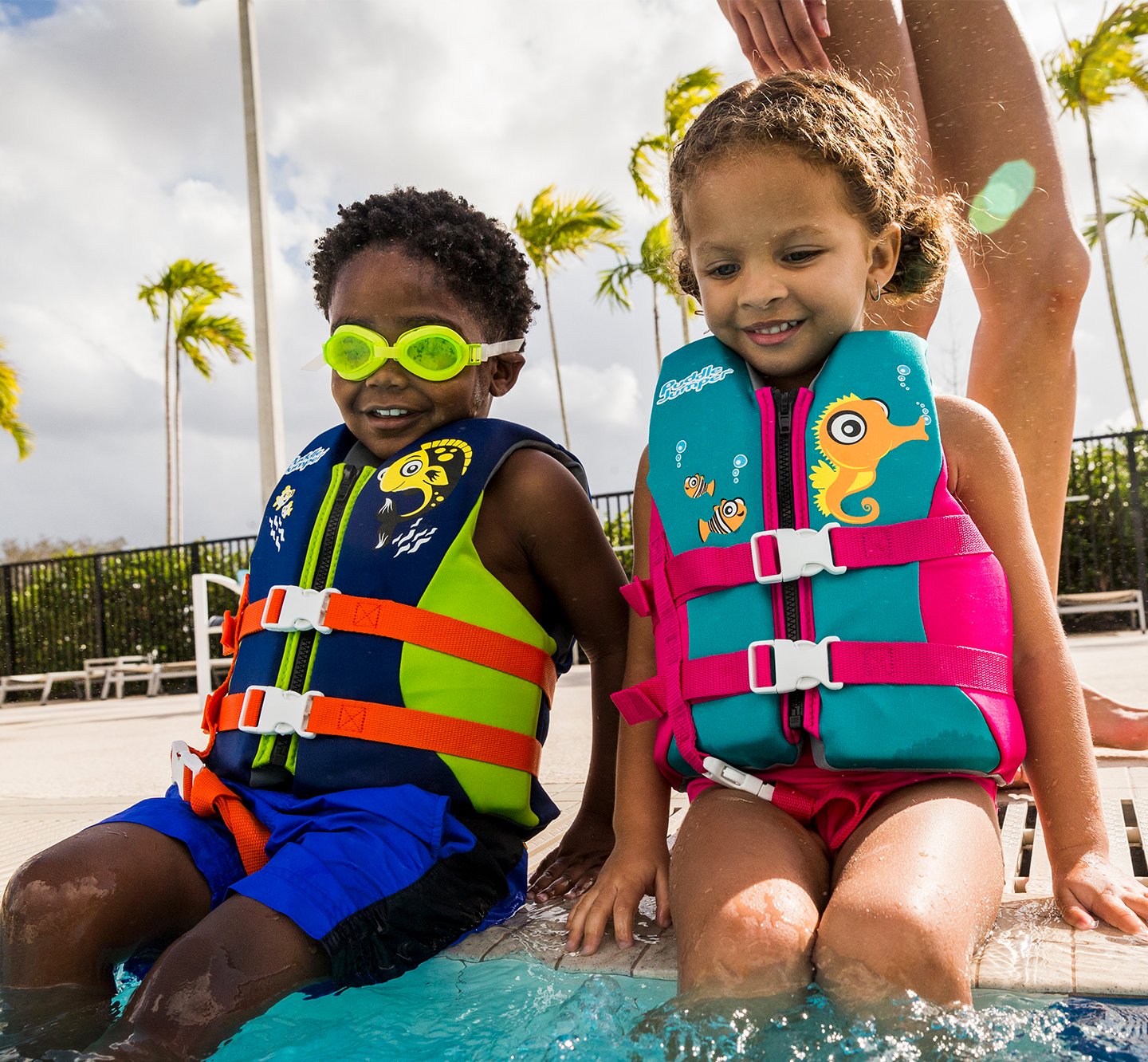Catamaran Boat: Insider Tips for a Smooth Sailing Experience
Catamarans have become increasingly popular in recent years, offering sailors a unique and versatile boating experience. These watercraft feature two parallel hulls of equal size, providing stability and a spacious layout.
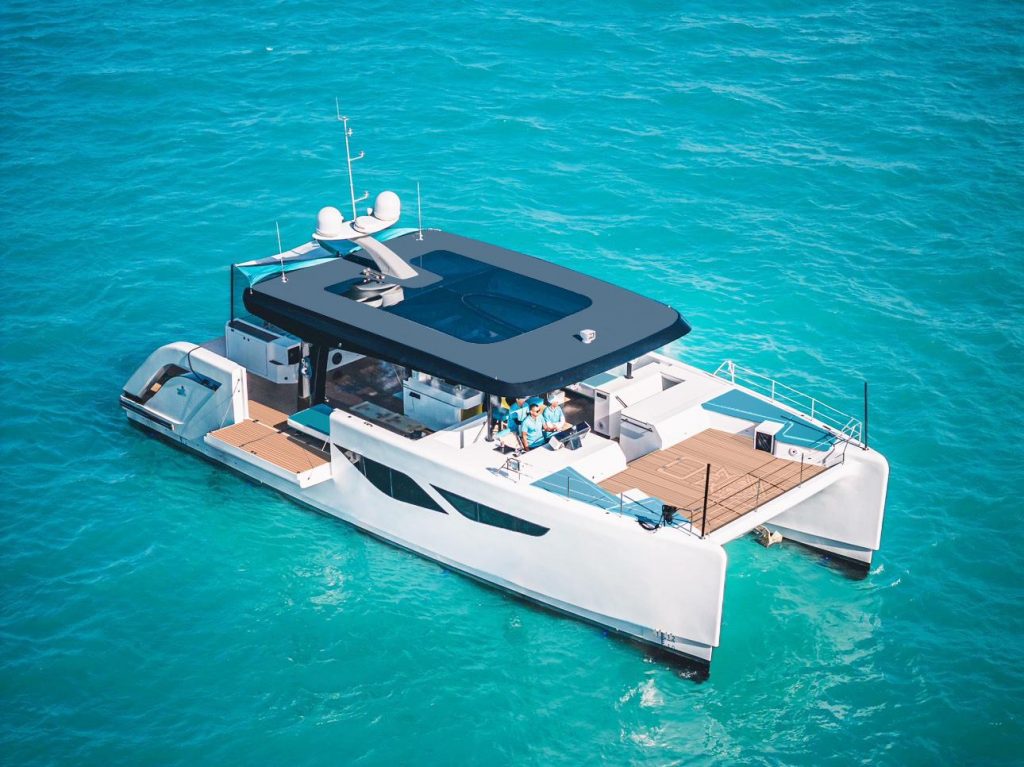
Originating from ancient fishing and transportation vessels used in the South Pacific, catamarans have evolved into various modern designs suitable for cruising, racing, and even passenger ferries.
Different types of catamarans include sailing catamarans, motor catamarans, and hybrid versions that utilize both sail and power for propulsion. Sailing catamarans have experienced a surge in popularity due to their performance, safety features, and ease of use.
With their wide beam and reduced draft, catamarans are more stable in the water, allowing for smooth and safe sailing experiences even in choppy conditions. Owners appreciate the spacious living spaces, panoramic views, and shallow draft, which allows for exploration of remote destinations that would be difficult to access with a monohull vessel.
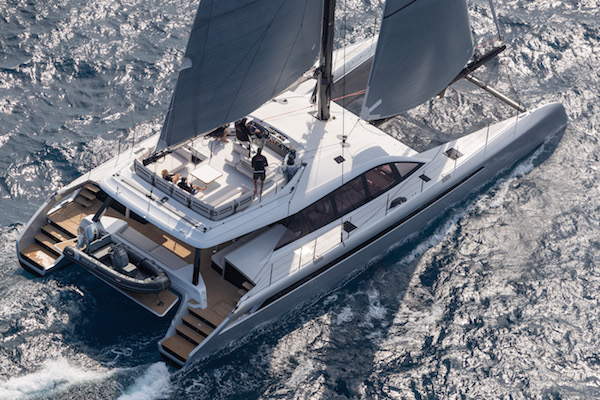
Key Takeaways
- Catamarans offer stability and spacious layouts due to their dual-hull design
- Various types cater to different boating activities like cruising, racing, and transportation
- Sailing catamarans provide smooth and safe experiences with their performance and design features
History and Design
Origins of the Catamaran
Catamarans are believed to have originated in the South Pacific region, specifically in the islands of Polynesia. Their earliest constructions are thought to date back to around 1500 to 1000 BC by the Austronesians.
The word "catamaran" itself is derived from the Tamil word kattumaram, which means "logs bound together". These early catamarans, often referred to as double canoes, were initially created using two logs or hulls bridged by planks. This design was spread to other cultures through trading and other means of communication.
The traditional Polynesian catamaran, or outrigger, had a simple design that enabled it to traverse vast expanses of the Indian Ocean. These ancient catamarans were built using locally sourced materials such as wood, bamboo, and plant fibers. The hulls were designed in various shapes and sizes to accommodate specific needs, such as fishing, transportation, or warfare.
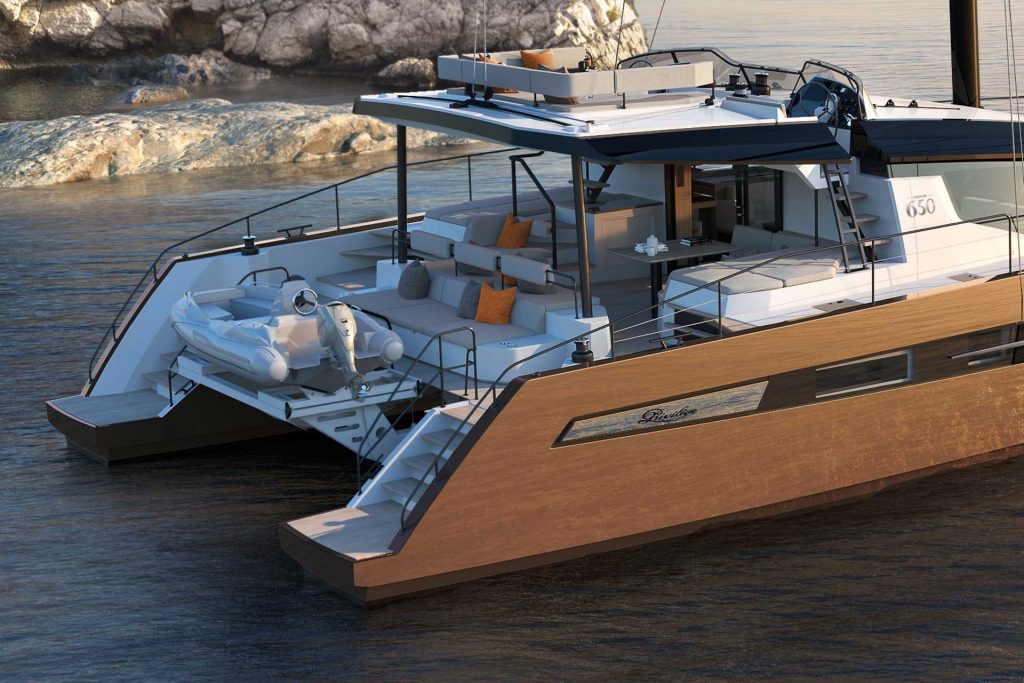
Modern Catamaran Engineering
Over the years, the design and construction of catamarans have evolved significantly due to advancements in materials and engineering techniques.
Modern catamarans are now commonly constructed using carbon fiber and fiberglass, which provide increased strength, durability, and weight reduction.
Some key elements of modern catamaran engineering include:
- Hulls: The twin hulls provide natural stability and improved efficiency in comparison to single-hulled boats. The shapes and hull types can vary, catering to different uses, such as racing, cruising, or commercial purposes. Hull designs can be symmetrical or asymmetrical, depending on the desired performance characteristics.
- Bridgedeck: The bridgedeck connects the two hulls and generally serves as the primary living and working area on the catamaran. It can be designed with cabins, steering stations, and other amenities, depending on the intended use of the vessel.
- Rigging and Sails: Catamarans typically utilize various sail configurations to optimize performance and ease of handling. Common rigs include the sloop, cutter, and ketch configurations.
- Propulsion: While sailing catamarans rely primarily on wind power, many modern catamarans are also equipped with engines, which provide additional speed and maneuverability when needed.
Types of Catamarans
Sailing Catamarans
Sailing catamarans use the power of wind to navigate through the water, making them an environmentally friendly option. These vessels are equipped with sails and a mast.
Examples of reputable brands producing sailing catamarans include Fountaine Pajot, Nautitech, and Bali. Sailing catamarans are suitable for casual sailing, racing, and even luxury yachting.
Some popular models of sailing catamarans are:
- Fountaine Pajot: Lucia 40, Astrea 42
- Nautitech: Open 40, Open 46
- Bali Catamarans: Bali 4.1, Bali 4.8
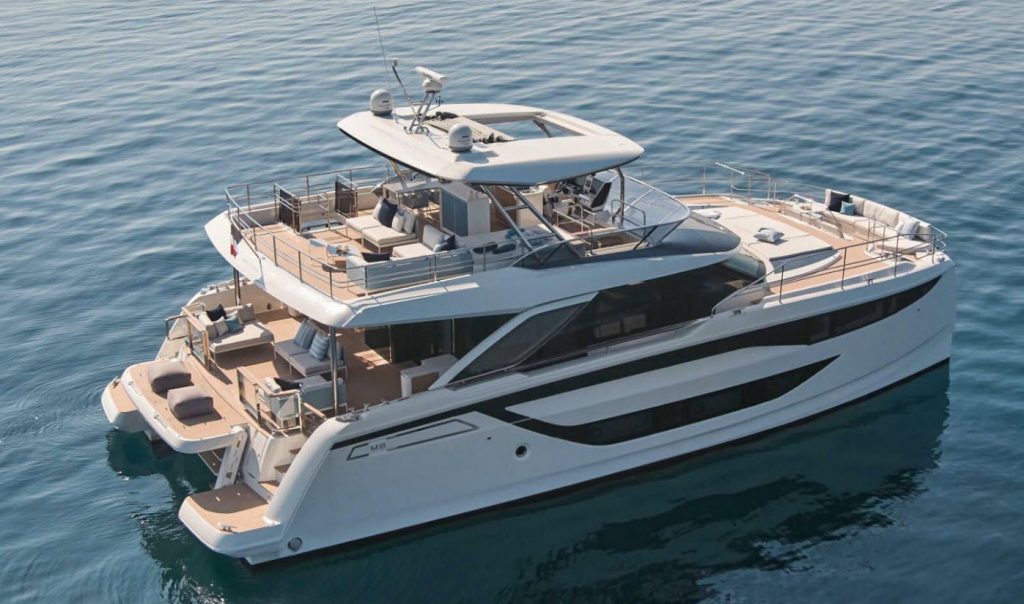
Power Catamarans
Power catamarans, on the other hand, rely on two engines for propulsion, making them faster and more fuel-efficient than their sailing counterparts.
They offer a broader beam, increased stability, and more living space. With a lighter weight due to the absence of a ballast, power catamarans are known to be more agile on the water. Popular brands in this category include Leopard and Prout Catamaran.
A few well-known power catamarans are:
- Leopard: Leopard 43, Leopard 51
- Prout Catamaran: Prout 39, Prout 45
Commercial Catamarans
Commercial catamarans are specifically designed for commercial use, such as ferries, cargo transportation, and tourism. These vessels have two parallel hulls connected by a deck or platform.
This design provides superior stability, speed, and efficiency on the water, making them a popular choice for transporting materials, vehicles, and passengers.
Here is a brief comparison of the three types of catamarans:
| Type | Propulsion | Popular Brands | Use Cases |
|---|---|---|---|
| Sailing Catamarans | Wind | Fountaine Pajot, Nautitech, Bali | Leisure sailing, racing, luxury yachting |
| Power Catamarans | Two Engines | Leopard, Prout Catamaran | Cruising, fishing |
| Commercial Catamarans | Various | - | Ferries, cargo transportation, tourism |
Design Features
Hull Configuration
A catamaran boat is characterized by its two parallel hulls that provide stability and a wide beam, allowing efficient weight distribution.
The hulls' cross-section and beam greatly influence the boat's performance and comfort. The wide beam contributes to catamaran's remarkable stability, reducing the risk of capsizing. Catamarans achieve smoother sailing experience, as they reduce the rocking motion caused by waves.
Deck and Sails Layout
The deck and sails layout plays an essential role in a catamaran's performance and ease of handling.
Typically, the mast is positioned centrally and supports the mainsail and other sails, providing a balanced sail area. Catamarans often feature sails with a large sail area to maximize speed and efficiency on the water.
Some popular sail configurations for catamarans include:
- Sloop Rig: A single mast with a mainsail and a single headsail (jib or genoa).
- Cutter Rig: A single mast with a mainsail and two headsails (jib and staysail).
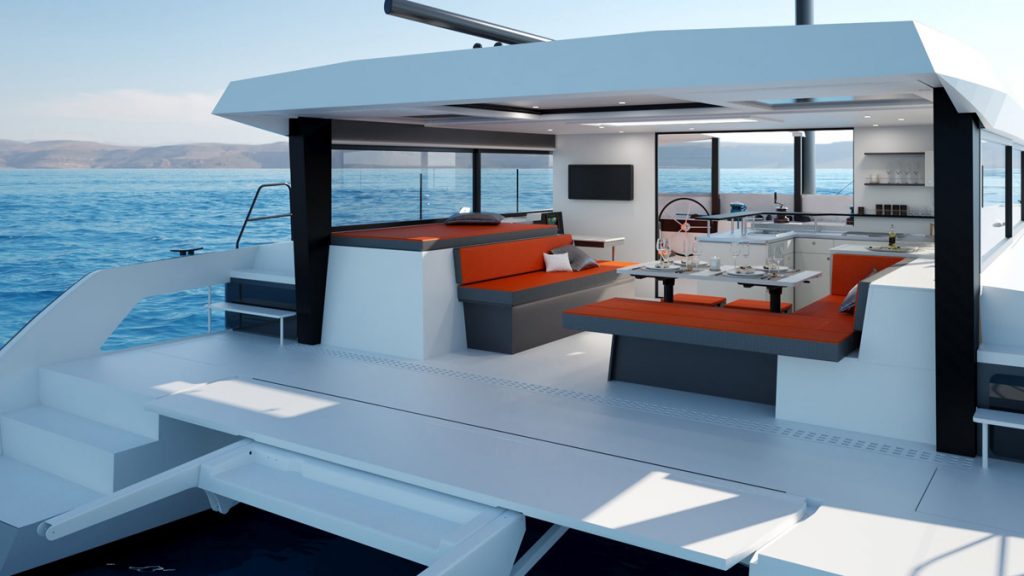
Living Spaces
One of the main attractions of a catamaran boat is its spaciousness, both on the deck and in the interior.
The wide beam creates a generous living area in the salon, cabins, and outdoor spaces.
The living spaces typically include:
- Salon: A spacious area for dining, lounging, and entertaining.
- Cabins: Often located in the hulls, the cabins provide comfortable staterooms with ample storage and privacy.
- Galley (kitchen): Well-equipped with necessary appliances and amenities for food preparation and storage.
- Cockpit: An outdoor space for navigating, relaxing, and entertaining, usually connected to the salon for seamless indoor-outdoor living.
Performance and Safety
Speed and Efficiency
Performance catamarans focus on achieving high speeds through their lightweight and aerodynamic designs. These boats are engineered with advanced materials, such as carbon fiber and efficient sail plans, to reduce weight and increase overall performance.
A good example of a performance catamaran is the Balance 482, which is praised for its speed and efficiency.
Performance catamarans are also designed to achieve high speeds. They often utilize efficient hull shapes and propulsion systems to minimize drag and save fuel. Some catamaran designs also incorporate hydrofoils or daggerboards, which can further reduce drag and improve overall speed.

Stability and Maneuverability
Safety is a key aspect when evaluating a performance catamaran. A stable platform reduces the risk of capsizing and improves comfort on board, which is vital during long ocean voyages or in rough seas.
The catamaran's wide beam and hull design facilitate greater stability compared to monohulls while minimizing the risk of capsize. The Outremer 4x is an excellent example of a stable performance catamaran that has been recognized for its safety features.
Maneuverability is another critical factor in catamaran performance. These boats are often equipped with twin rudders and dual engines, providing excellent control and maneuverability in tight spaces. Catamarans with retractable keels or daggerboards can also navigate shallow waters more easily than their monohull counterparts.
Comparison with Monohulls
Pros and Cons
Catamarans are popular mainly due to their stability and comfort compared to traditional monohulls. The twin-hull design of catamarans allows for more space on board, which translates to a better living experience. Furthermore, catamarans experience less heeling and provide a much steadier sailing experience. This reduces the risk of seasickness for the passengers.
However, there are also disadvantages to catamaran boats. Their broader shape can sometimes result in a higher initial cost compared to monohulls, although catamarans are known for their excellent resale value. Additionally, catamarans might not perform as well in upwind sailing, where monohulls can sail closer to the wind, giving them a slight edge in certain sailing conditions.
| Catamarans | Monohulls | |
|---|---|---|
| Pros | Stability, Comfort, Less Heeling, Lower Risk of Seasickness | Better upwind sailing, Lower Initial Cost |
| Cons | Higher Initial Cost, Less Responsive in Upwind Sailing | Less Stable, More Heeling, Increased Risk of Seasickness |
Preference in Sailing
The performance aspects of catamarans and monohulls differ significantly, and individual preferences can impact the choice between the two. Those valuing stability and comfort tend to lean towards catamarans due to their shallow drafts and larger living spaces.
On the other hand, sailing enthusiasts who seek responsiveness and the true "feel" of sailing might prefer monohulls, as they offer immediate feedback in wind pressure and trim adjustments.
When it comes to docking, catamarans have a slight edge over monohulls. Their dual-motor and dual-rudder setups make them easier to maneuver, eliminating the need for a bow thruster. However, in certain conditions like powering against a strong wind, a monohull under auxiliary power might be faster.
Technical Specifications
Size and Capacity
The size and capacity of a catamaran varies depending on the specific model and its intended purpose. For instance, the Lagoon 42 has a length of 42 feet (12.8 meters) and is designed for cruising.
The larger Windelo 54 catamaran measures 53'3" (16.24 meters) in length, offering more space for a comfortable sailing experience.
In terms of capacity, catamarans can accommodate a wide range of crew sizes. The number of cabins and berths available depend on the layout and customization options.
Draft and Waterline
The draft refers to the minimum depth of water a boat requires to float, while the waterline length represents the length at which the boat sits on the water. In general, catamarans have a relatively shallow draft and longer waterline lengths as compared to monohulls.
This is due to their dual-hulled design, which ensures better stability and buoyancy.
Construction materials, weight, and beam also play a crucial role in determining a catamaran's performance in various conditions. The Outremer 4X is a performance catamaran with optimized weight and a sail plan designed to handle diverse weather conditions. Its construction offers a balance between comfort, speed, and seaworthiness.
Displacement—the weight of the water a boat displaces when floating—contributes to a catamaran's overall performance. Lower displacement figures indicate lighter boats, which generally leads to a faster and more responsive sailing experience. Catamarans often have lower displacements than monohulls of similar sizes, making them a popular choice among performance-focused sailors.
Ownership and Use
Maintenance Tips
Owning a catamaran comes with responsibilities to ensure a safe and comfortable ride. Regular maintenance is essential to keep the vessel in top condition.
One crucial aspect is inspecting and maintaining the engines. Make sure to check the oil levels regularly, replace oil and air filters as needed, and examine the anodes, as they protect the engine from corrosion.
Additionally, keep an eye on the sails and rigging. Inspect them for wear and tear and replace any damaged or worn-out components. Cleaning the hull and deck periodically helps maintain the boat's visual appeal and overall quality.
In order to maximize the durability and longevity of your catamaran, make sure to follow the recommended maintenance plan provided by the manufacturer.
For a comprehensive list of maintenance tasks and tips, consult the Catamaran Guru website.
Catamaran Market
The catamaran market has grown significantly over the past few years, with a range of brands and models available, such as Lagoon, Fountaine-Pajot, and Leopard.
As a result, it's crucial for prospective buyers to be aware of current market trends and carefully choose the best fit for their needs.
Some of the factors that contribute to the appeal of catamarans include their spacious design, stability, and comfortable ride. These traits are highly sought after in recreational and long-distance cruisers alike.
Thus, many catamaran owners opt for chartering their boats as a way to offset the ownership costs. You can consider listing your catamaran for short-term rental in platforms like YachtWorld to make the investment more financially viable.
Before making a purchase, make sure to research the catamaran's resale value and overall cost of ownership, which includes insurance, maintenance, and docking fees.
One way to minimize these costs is through fractional or shared ownership. This model allows multiple parties to share the financial burden of owning and maintaining a catamaran.
For more information about fractional ownership, visit Moorings Yacht Ownership.
Applications and Uses
Catamaran boats have a wide range of applications and uses, from leisure and recreation to long distance cruising and transportation. Due to their unique design and enhanced stability, catamarans offer various advantages that make them suitable for many different types of activities.
Recreational Activities
Catamarans can be great vessels for various recreational activities such as sailing, fishing, and adventure among others.
With sailing catamarans, the two hulls provide stability in different water conditions, making them ideal sailing vessels that can be used for leisure, sport, and racing.
Catamarans can be used for fishing too. Their shallow draft and spacious platform make them perfect for accessing shallow fishing spots.
For those who seek adventure, catamarans provide an excellent platform for water sports or exploration of remote locations.
They are commonly used for water sports like wakeboarding, water skiing, or scuba diving, due to their spacious and stable nature.
Travel and Cruising
Apart from recreational activities, catamarans also excel in longer distance cruising and travel.
Their design features such as reduced drag and lighter weight, as mentioned on partyboatcharter.com, make them more fuel efficient, which translates into lower operational costs and longer voyages.
Additionally, catamarans offer enhanced comfort and space, and can be used for longer trips without compromising on luxury.
The wide platform and separate hulls create spacious living areas, allowing for a comfortable stay at a marina or underway.
Moreover, catamarans can be an ideal choice for transportation, especially when used as ferries.
Due to their flat and stable platform, they are often purposed for transporting people, vehicles, and materials between destinations.
Advancements in Catamaran Technology
Innovations in Sailing
In recent years, there have been significant advancements in catamaran design and performance, especially in sailing technology.
One of the major innovations is the use of cutting-edge materials and construction techniques, which have led to improved hull designs and hydrodynamic efficiency1.
These developments have allowed catamarans to achieve unprecedented speed and safety levels, making them a popular choice among sailors.
Another noteworthy advancement in sailing catamarans is the use of new sail fabrics with improved aerodynamic qualities.
These materials enhance a catamaran's wind-capturing ability, leading to remarkable speed improvements.
On top of that, advances in rigging systems, such as electric winches and roller furling systems, have made managing the sails easier and more effective.
In addition to speed, racing catamarans have significantly benefited from these advancements.
The use of lightweight, high-strength materials has led to reduced overall weight, allowing these catamarans to achieve higher top speeds and maintain better stability2.
Eco-Friendly Developments
Sustainability is a growing concern in the boating industry, and catamarans have not been left behind.
Advances in eco-friendly technology, such as electric propulsion, have become increasingly popular among catamaran manufacturers and boat owners.
Electric propellers, powered by onboard battery banks or solar panels, have contributed to reduced emissions and fuel consumption, making catamarans more environmentally friendly.
Some examples of eco-friendly advancements found in modern catamarans include:
- Electric inboard motors: These motors replace conventional gasoline or diesel engines, significantly reducing emissions and offering quiet, efficient operation3.
- Solar panels: Modern catamarans often incorporate solar panels into their designs, allowing them to generate clean, renewable energy to power onboard systems and electric motors.
- Hybrid systems: Combining traditional fossil fuel engines with electric motors, hybrid catamarans can switch between power sources as needed, providing a balance between performance and environmental impact.
Frequently Asked Questions
How do I select the right catamaran for sale?
When selecting a catamaran for sale, it's important to consider factors such as your intended use, budget, and specific needs.
For instance, if you plan to use the catamaran for cruising and entertaining, prioritize spaciousness and comfort.
Research different catamaran models, read reviews, and consult with experienced catamaran owners to find a boat that meets your requirements.
Don't forget to also factor in ongoing maintenance and storage costs.
What should I look for in a quality catamaran fishing boat?
A quality catamaran fishing boat should offer stability, ample deck space for storing gear, and user-friendly design features to maximize fishing efficiency.
Look for boats with sturdy construction, reliable engines, and advanced navigation systems.
Additionally, consider the size of the boat based on your fishing needs, such as shallow drafts for accessing shallow waters.
What are the size variations for small catamarans?
Small catamarans typically range in length from 16 to 35 feet.
Smaller vessels are suitable for casual sailing and day trips, while larger catamarans may be better suited for longer expeditions or cruising. Size variations can impact overall boat performance, handling, and storage requirements.
What amenities can I expect on a catamaran boat tour?
Amenities on a catamaran boat tour can vary depending on the service provider and the size of the vessel.
Common amenities may include comfortable seating areas, sunshades, restrooms, and refreshments.
Larger catamarans may offer additional amenities such as onboard dining, sleeping quarters, and water sports equipment like snorkeling gear or paddleboards.
How do I go about renting a catamaran for a day?
To rent a catamaran for a day, start by researching local boat rental companies or marinas that offer catamaran rentals.
Inquire about availability, rental rates, insurance coverage, and any necessary qualifications.
In some cases, you may be required to have boating experience or hold a valid boating license.
Consider booking your rental well in advance, especially during peak season.
What are the safety features to consider when purchasing a catamaran?
When purchasing a catamaran, prioritize safety features such as sturdy construction, reliable engines, and well-maintained rigging.
Additionally, look for catamarans with wide beams for increased stability and easy-to-access safety equipment, like lifejackets and fire extinguishers.
Advanced navigation systems and onboard communication devices can greatly enhance safety during your catamaran adventures.
Charlie is Editor-in-Chief of Sea Magazine
